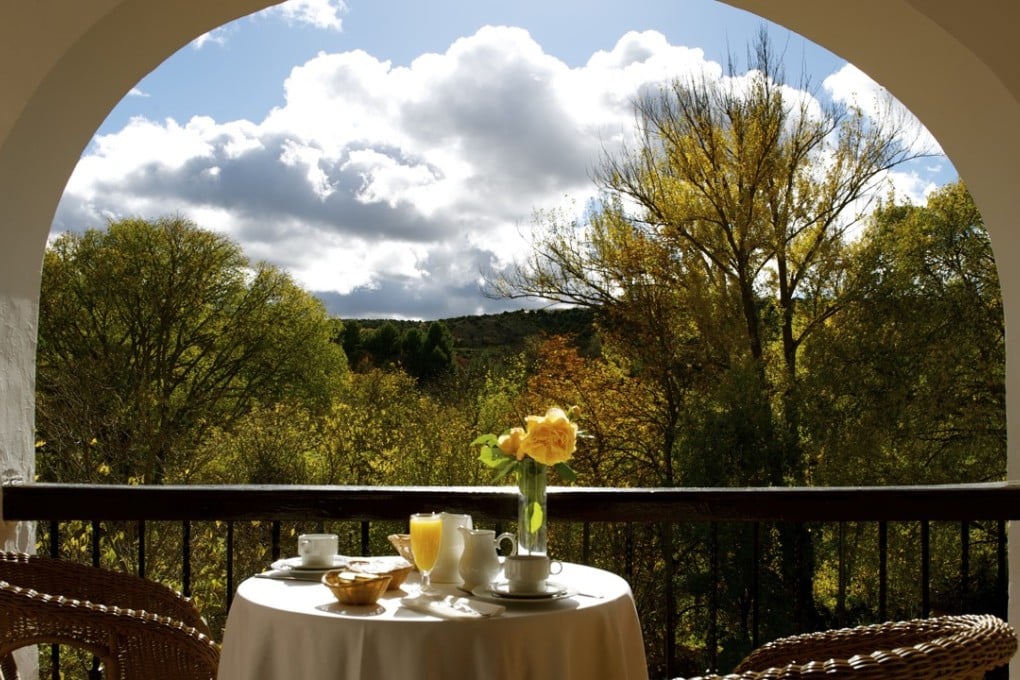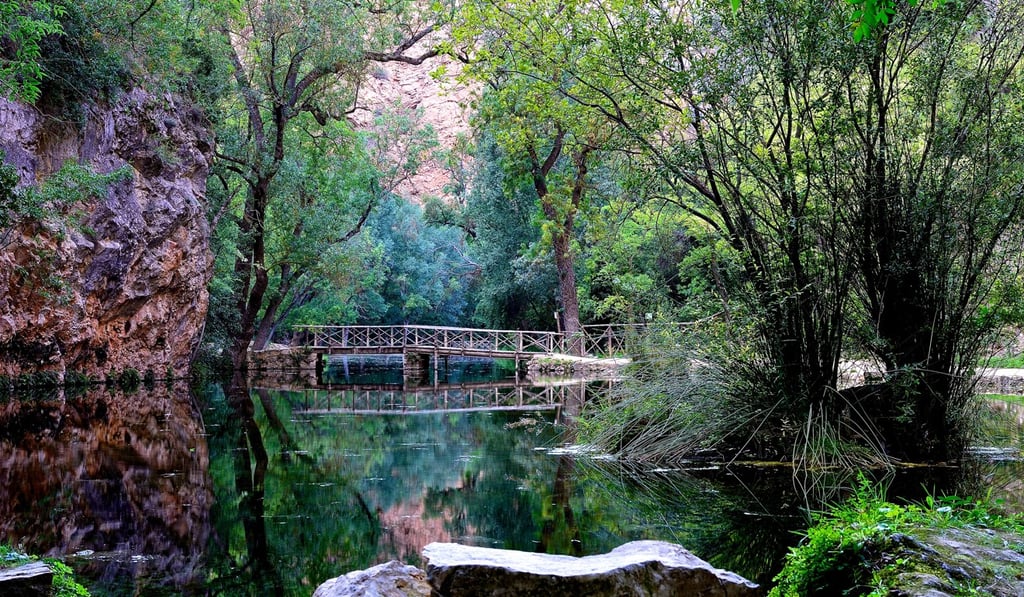Heavenly holiday: stay in a Spanish monastery known as the ‘birthplace of chocolate’
The Cistercian Monasterio de Piedra in Zaragoza province now boasts a hotel, spa and beautiful parkland complete with 21st century comforts

What is it? Monasterio de Piedra is a 12th-century Cistercian monastery that has been converted into a hotel, spa and park, on the banks of the Piedra River, in Zaragoza province, northeast Spain. The story begins when King Alfonso II gave Piedra Castle to the abbot of Poblet in 1186, so he could found a monastery. The consecration of the abbey’s church took place on December 16, 1218, making this year its 800th anniversary.
In 1843, Pablo Muntadas Campeny, taking advantage of a government auction of church property, bought the buildings and surrounding land. His son, Juan Federico Muntadas, converted the monastery’s agricultural land into a park and the buildings into a hotel and hydrotherapy centre. In 1867, a pioneering fish farm was added, parts of which can still be seen. Since then, it has become one of the most popular tourist destinations in the Aragon region.
Isn’t this place known as the “Birthplace of Chocolate”? It is, at least as far as Europe is concerned. Back in the 16th century, when Spanish conquistador Hernán Cortés went off to conquer Mexico, he was accompanied by one Jerónimo de Aguilar, a friar from Piedra Monastery. Having learned that the Aztecs hailed chocolate as “the food of the gods”, Cortés became an advocate, claiming it “enables you to travel all day without tiring”.
In 1534, Cortés gave a sack of cocoa beans to Aguilar, who sent them back to the abbot, together with a recipe for making drinking chocolate out of them, with added sugar, cinnamon and vanilla. Piedra Monastery thus became the first place in Europe where chocolate was prepared and consumed.
The monks soon got a taste for the stuff and even consumed it during their liturgical fasts, arguing that, as there was no mention of chocolate as a food in the Old Testament, it didn’t break their fast. In the cloister is the monks’ old kitchen, where an exhibition explaining the history of the monastery’s chocolate can be found.

